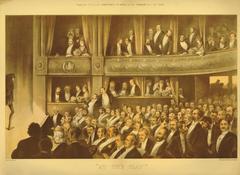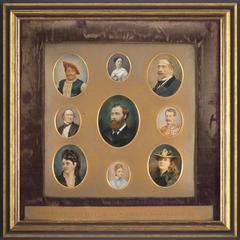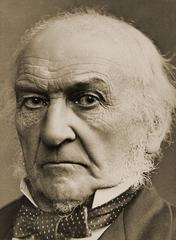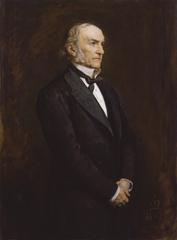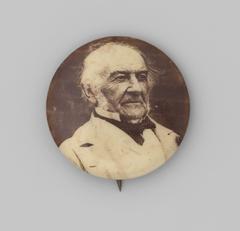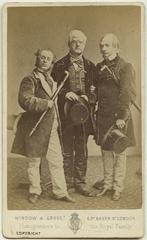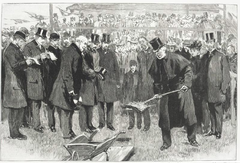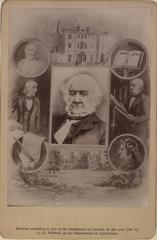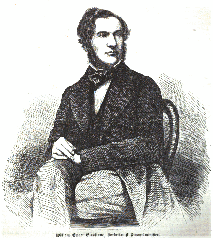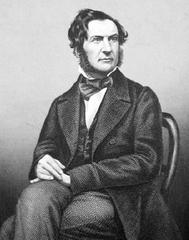
William Ewart Gladstone Monument Athens: Visiting Hours, Tickets, and Travel Guide
Date: 14/06/2025
Introduction
The William Ewart Gladstone Monument in Athens is a significant cultural and historical landmark, reflecting the enduring relationship between Greece and the United Kingdom. Located prominently at the University of Athens, this neoclassical statue honors Gladstone’s pivotal contributions to Greek independence, education, and the promotion of democratic values. Whether you are a history enthusiast, admirer of classical art, or traveler delving into Athens’ rich heritage, this comprehensive guide will provide essential information on the monument’s history, visiting hours, accessibility, nearby attractions, and practical tips to ensure a rewarding visit.
Table of Contents
- Historical Context and Significance
- Artistic Value and Design
- Visitor Information
- Guided Tours and Special Events
- Best Photographic Spots
- Nearby Attractions
- Travel Tips
- FAQ
- Gladstone Street: Location and Visitor Guide
- Suggested Itineraries
- Conclusion
- References
Historical Context and Significance
William Ewart Gladstone (1809–1898), four-time Prime Minister of the United Kingdom, was a renowned philhellene—a lover and supporter of Greek culture and independence. Gladstone played a critical diplomatic role in advocating for the expansion of Greek territories, notably supporting the annexation of Thessaly and Arta to Greece via the Treaty of Berlin (1881). His commitment to national self-determination and education, coupled with his scholarly work on classical Greece, made him a respected figure among Greeks (BBC History, Military Tourism Greece).
The statue was commissioned in 1882 by a panhellenic fundraiser and was unveiled at the University of Athens in June 1900. Its placement at the Propylaea of the university underscores the enduring bond between Gladstone’s ideals and the aspirations of modern Greece (estories.uoa.gr).
Artistic Value and Design
Sculpted by Georgios Vitalis, a leading figure in Greek neoclassicism, the Gladstone Monument is crafted from white marble—a material deeply embedded in Greek artistic heritage. The statue depicts Gladstone as an orator, standing confidently with his right hand extended and a scroll in his left, symbolizing the Treaty of Berlin. His formal yet approachable attire reflects his status as both a statesman and a champion of the people. The monument’s neoclassical style situates it among other key 19th-century public sculptures in Athens, such as Lord Byron and Theodoros Kolokotronis (militarytourism.warmuseum.gr, travel.gr).
Each element of the statue is symbolic—the extended hand for eloquence and public engagement, the scroll for Gladstone’s diplomatic achievements, and the marble for purity and endurance.
Visitor Information
Location and Accessibility
The Gladstone Monument stands in the courtyard of the University of Athens, on Panepistimiou Street, at the heart of the city’s neoclassical “trilogy” (University, National Library, and Academy). The site is easily reached by public transportation, with Panepistimio and Omonia metro stations nearby.
Visiting Hours and Admission
- Monument Access: The statue is located in an open courtyard and is accessible 24 hours a day.
- Admission: There is no entrance fee or ticket required to visit the monument.
- Photography: Taking photographs is encouraged, especially during early morning or late afternoon for optimal lighting.
Accessibility for Disabled Visitors
The University of Athens provides curb cuts, ramps, and elevators in main buildings, ensuring reasonable accessibility for visitors with mobility challenges. Omonia Metro Station is also fully accessible (Athens Metro Accessibility).
Guided Tours and Special Events
While there are no official tours dedicated solely to the Gladstone Monument, many guided walking tours of central Athens include it as a featured stop. These tours often provide historical context on Gladstone’s legacy and the significance of the neoclassical trilogy. Special commemorative events may be held around key anniversaries. Inquire with local travel operators or the university’s visitor center for available tours (Nomadicated).
Best Photographic Spots
- Monument and Propylaea: Capture the statue framed by the university’s neoclassical façade.
- Neoclassical Trilogy: Photograph the monument with the National Library and Academy of Athens as a backdrop.
- Nearby Streets: Early morning and golden hour provide the best light and fewer crowds.
Nearby Attractions
- National Library of Greece: Next to the University, it houses rare manuscripts and classical architecture.
- Academy of Athens: An architectural landmark and center for academic life.
- Syntagma Square: The city’s central square, featuring the Hellenic Parliament and Changing of the Guards.
- National Archaeological Museum: A world-class collection of ancient Greek art, a short walk from the monument.
- Plaka and Anafiotika: Traditional neighborhoods offering picturesque streets, shops, and tavernas.
- Exarchia: Known for vibrant street art and alternative culture.
Travel Tips
- Best Time to Visit: Spring and autumn for pleasant weather and fewer crowds.
- Transport: Use metro (Panepistimio or Omonia stations), bus, or trolleybus for easy access.
- Safety: The area is generally safe, but use standard urban precautions, especially at night.
- Dress Code: Comfortable attire and modest dress when entering churches or religious sites.
- Language: English is widely spoken in central Athens.
FAQ
Q: Where is the Gladstone Monument located?
A: In the courtyard of the University of Athens, Panepistimiou Street, central Athens.
Q: What are the visiting hours?
A: The monument is accessible 24/7 as it is in an open public space.
Q: Is there an entrance fee?
A: No, visiting the monument is free.
Q: Are guided tours available?
A: Many city walking tours include the monument; check with local operators.
Q: Is the site accessible to disabled visitors?
A: Yes, the monument and surrounding area provide curb cuts, ramps, and accessible transport.
Gladstone Street: Location and Visitor Guide
William Ewart Gladstone Street (Οδός Γλάδστωνος) is a major urban artery in the Omonia district, running parallel to Patission Avenue and connecting the National Archaeological Museum to Omonia Square. While not a monument itself, the street is notable for its central location, vibrant local life, and proximity to key attractions (Google Maps).
Getting There
- Metro: Omonia Station (Lines 1 & 2) is about 200 meters away.
- Bus/Trolley: Numerous lines serve Patission Avenue and Omonia Square (Athens Urban Transport Organization).
- On Foot: Easily walkable from the National Archaeological Museum and other central sites.
Amenities and Services
- Accommodation: Hotels and hostels for all budgets.
- Dining: Taverns, cafes, international and vegetarian options.
- Banks/ATMs: Widely available on and around Gladstone Street.
Safety
The area is busy and generally safe during the day, but standard precautions are advised, especially at night (Reddit TravelHacks).
Suggested Itineraries
Half-Day Walking Tour
- Start at the Gladstone Monument (University of Athens)
- Visit the National Library and Academy of Athens
- Walk to Syntagma Square for the Changing of the Guards
- Stroll down Ermou Street to Monastiraki and the Ancient Agora
Full-Day Classic Athens
- Morning: Gladstone Monument and Syntagma Square
- Midday: Acropolis and Acropolis Museum
- Afternoon: Plaka and Anafiotika
- Evening: Lycabettus Hill for sunset views
Three-Day In-Depth Exploration
- Day 1: Classical sites (Gladstone Monument, Syntagma, Acropolis)
- Day 2: Museums and neighborhoods (National Archaeological Museum, Monastiraki, Plaka)
- Day 3: Modern Athens (Panathenaic Stadium, Benaki Museum, street art tour)
Conclusion
The William Ewart Gladstone Monument and the surrounding memorials in Athens offer visitors a profound connection to the city’s modern history and its ties with the United Kingdom. The monument is freely accessible, set among Athens’ neoclassical architectural gems, and makes an excellent starting point for exploring the city’s rich cultural and historical heritage. Whether you are interested in political history, art, or simply experiencing the pulse of Athens, including the Gladstone sites in your itinerary will provide depth and context to your visit.
Enhance your travel experience by joining a guided tour, photographing the stunning architecture, and using digital resources such as the Audiala app for curated guides and updates. Embrace the legacy of William Ewart Gladstone and enjoy everything Athens has to offer.
References
- BBC History: William Ewart Gladstone
- Military Tourism Greece: William Edward Gladstone
- University of Athens E-Stories: Statue of William Gladstone
- Nomadicated: Athens Historical Sites Tour
- Travel Greece: Best Monuments and Landmarks in Athens
- World History Edu: William Ewart Gladstone
- Real Greek Experiences: Athens 3-Day Itinerary
- Lonely Planet Athens Guide
- Earth Trekkers Athens Itinerary
